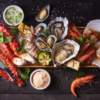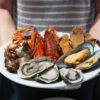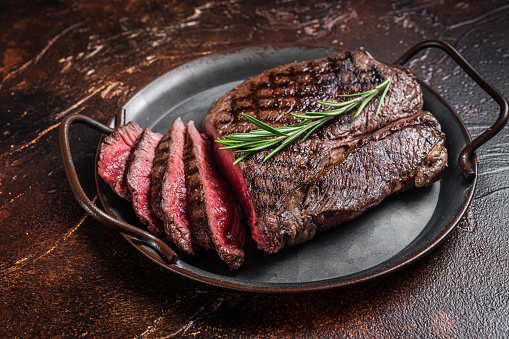It was around 2013 or 2014 and it was a long annual school holiday. It was also the time that I was waiting for very eagerly when I was a school student. My big family was planning to visit a seafood restaurant as one of the included itineraries for the holiday in Perak, Malaysia. I could remember the time when we were hunting for the best place to eat fresh seafood in that state, and it was so inevitably laborious but also funny to be remembered. Many years have passed, and all of a sudden, I have a curiosity that might kill a cat. Perhaps you may start to wonder about a similar thing that I have just thought about for a while. Today’s article is not about buy car Malaysia. Have you wondered about the origin history of seafood? Have you pondered about a group of people in a certain civilization, who have enjoyed and decided that particular seafood is edible? This article will be a long-written article in which I am dedicated to tell you the history of seafood and the nutritional benefits of consuming seafood for the human body. Although there is a higher probability of uncertainty, questioning, and source gaps in history itself, I hope that all of us can gain something more knowledgeable about seafood!
All About Seafood
Any form of sea creature regarded as edible food is counted as seafood. The seafood encompasses many types of fish and shellfish. Molluscs, crustaceans, and echinoderms are among the common shellfish that we regard as seafood, although the types of shellfish themselves are not constrained to only those. Historically, several civilizations have been hunting for sea mammals such as whales and dolphins, and thus have consumed them as seafood. In Asia, especially among the East Asian members of society, edible sea plants such as seaweed microalgae, are widely eaten and added to dishes to supplement the taste and also for nutritional purposes. Meanwhile, in North America, the term ‘’seafood’’ is extended to edible freshwater organisms, thus all marine life that is eaten by humans is considered seafood. Fishing is an activity that is resembled harvesting, meanwhile aquaculture is a way of ‘’farming’’.
At least 40,000 years ago, at the start of the Palaeolithic era, people began to gather, prepare, and consume various kinds of seafood. Tianyuan Man, a 40,000-year-old modern human from eastern Asia, ate freshwater fish on a daily basis, according to isotopic analyses of his skeletal remains. Archaeological artifacts like shell middens, discarded fish bones, and cave paintings demonstrate how crucial and widely consumed sea foods were for survival. The majority of individuals in this era led a hunter-gatherer lifestyle and were consequently always on the go. However, early examples of communities that had a settlement area, like those at Lepenski Vir, which were not always inhabited, are connected to fishing as a primary source of sustenance. A large part of the people depended solely on fresh and dried fish, which were abundant in the ancient Nile River. Fishing equipment and techniques used by the Egyptians are depicted in tomb scenes, drawings, and papyrus records. Some depictions make a hint that people might enjoy fishing as a pastime.
Ancient Greek art rarely depicts fishing scenes, which is indicative of fishing’s low social standing. The Halieulica or Halieutika, a significant treatise on sea fishing, was written between 177 and 180 by the Greek author Oppian of Corycus. The first such work that has endured to the present day. Different fish were consumed depending on the household’s wealth and location. Fresh fish and seafood such as squid, octopus, and shellfish were readily available on the Greek islands and along the shore. They were consumed locally but were more frequently transported inland. The Athens population regularly consumed sardines and anchovies. Although they were typically salted, they were occasionally sold fresh.
A list of fish prices can be found on a stele from the little Boeotian city of Akraiphia on Lake Copais that dates to the late third century BCE. Skaren (likely parrotfish) was the least expensive, whereby Atlantic bluefin tuna cost three times as much. Yellowfin tuna, red mullet, ray, swordfish, or sturgeon were common saltwater fish that were eaten salted. The eels from Lake Copais were celebrated by The Acharnians who made it famous across all of Greece. Other freshwater fish were carp, pike fish, and the less popular catfish.
Nutritional Benefits Of Consuming Food For The Human Body
I. Improve Cardiovascular Function
It is well known that all seafood contains omega-3 fatty acids. However, oily fish such as salmon, sardines, trouts, and Atlantic and Pacific Mackerel are the richest sources of EPA and DHA. EPA and DHA are the fatty acids that can help lower high blood pressure, and heart rate and improve cardiovascular function. Research has proved that omega-3 fatty acids improve and stabilize abnormal heartbeats. The abnormal heartbeat or is known by its medical term ‘’arrhythmias’’ can lead to the fatal result, which it has caused sudden death. Other than that, these healthy fatty acids can decrease triglyceride levels and slow the growth rate of atherosclerotic plaque.
II. Pregnancy And Lactation
Seafood is very important during fetal growth and development. Pregnant women, breastfeeding mothers, and women of childbearing age are advised to consume seafood in an advised amount as seafood is high in DHA and contributes to the brain and visual development of infants. According to the 2010 Dietary Guidelines for Americans, pregnant women or breastfeeding women can enhance their infants’ cognitive and visual development by consuming at least 8 and up to 12 ounces of seafood per week. However, due to methyl mercury that is often found in wild fish, women who are pregnant and breastfeeding and young children should eat no more than 6 ounces per week of white (albacore) tuna and should not eat tilefish, shark, swordfish, and king mackerel.
III. High In Vitamins And Minerals
Oily fish are not only rich in fatty acids but also have generous amounts of vitamins A and D, while fish with bones remaining like canned salmon, and sardines are good sources of bone-building calcium. Marine fish are a dietary source of iodine.







